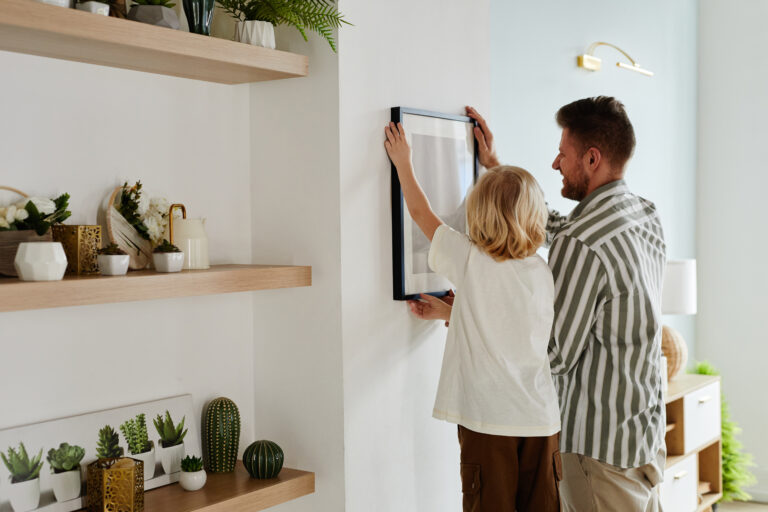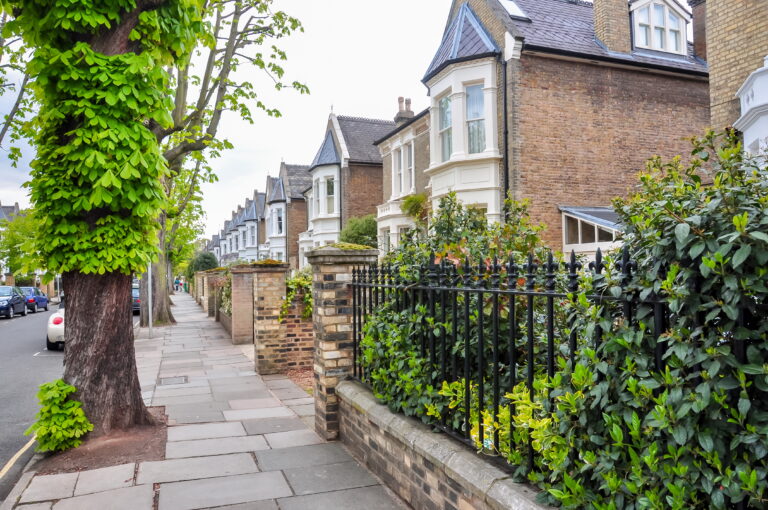There are many ways that you can save money on DIY and decorating projects whilst increasing the value of your home in the process. Here we run through a few relatively easy ones that you can try soon.
Decorating
This is a great tip – if you’re looking for a unique paint colour, simply buy a large container of pure brilliant white, and stir in a couple tester pots in a strong colour. This will give you a more liveable-with, muted version of the tester colour, and at a fraction of the price of pre-mixed coloured paint. Also, feature walls are a way of piggybacking on the wallpaper trend without spending a fortune.
Painted Concrete Floors
Not just for garages, painted concrete floors look very chic indeed and are second-to-none when it comes to being hardwearing, easy to clean, and budget friendly. Before painting, check that the concrete is dry and free of any major holes. If it’s damp, unfortunately you’ll need to have that seen to by a professional before you can start painting. Before painting, remove any grease from the concrete, fill any small gaps with Polyfilla, then prime and paint with a roller. Use specialist concrete floor paint, of course.
DIY Loft Insulation
Believe it or not, it’s possible to install loft insulation yourself, and of course, you’ll save a packet on your energy bills once it’s in place. For a 3-bed semi-detached house, you’ll save around £150 a year. However, before you start, check whether you are eligible for a grant – that might cover the cost of the materials or even of getting someone else to install it for you.
The way to insulate your loft is to buy sheets of mineral wool quilting, and place 2 layers between the joists in the floor of your loft. Though the job is relatively straightforward, there are precautions and safety safety considerations; there is a full step by step guide here.
Refinishing Cabinets
Old-fashioned veneer kitchen cabinets can look decidedly uncool, but you can refinish them yourself, avoiding the cost of a whole new kitchen.
Before you get started, make sure you’ve got all the tools and equipment you need – small rollers will help you paint fiddly areas, for example, and a paint sprayer will give a great, even finish. Masking tape is essential for protecting surrounding areas and creating crisp edges, and don’t forget a dust sheet and protective clothing/mask.
Start by removing the cabinet doors and shelves, and giving everything a thorough clean. If your cabinets are wooden and you want to show off the natural wood with aclear gloss or varnish, you’ll need to remove any current paint with a sander or paint stripper. This is a big job but may be worth it if you have good quality wooden cabinets. Next, fill any cracks with wood putty. Then, use a primer before finally painting the cabinets.
We hope these simple and easy-to-follow tips have been useful and inspirational, and we wish you the best of luck with the exciting project that is renovating your new home, or sprucing up your current property to add value before you place it on the market.




